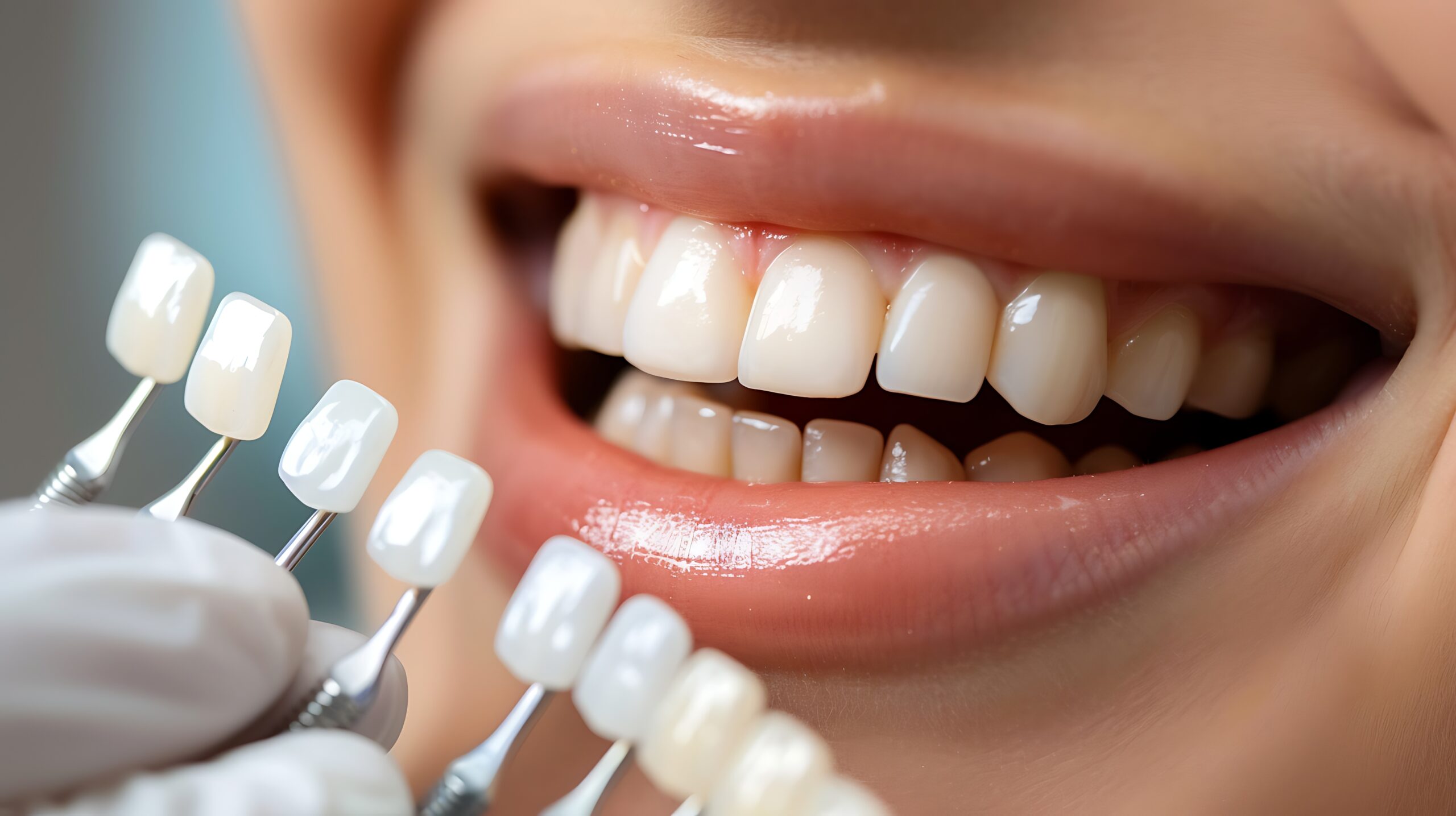
Your smile is one of the first things people notice about you, and it plays a significant role in your overall appearance and confidence. Over time, however, factors like aging, accidents, poor oral hygiene, and lifestyle choices can lead to dental problems such as cavities, missing teeth, cracks, or discoloration. Fortunately, restorative dentistry offers advanced treatments that can bring your smile back to life, improving both the function and aesthetics of your teeth.
In this blog, we’ll explore the top restorative dental procedures available today, how they work, and how they can help revitalize your smile. From fillings to dental implants, these modern treatments are designed to restore both the beauty and function of your teeth, giving you a smile that looks and feels great.
What is Restorative Dentistry?
Restorative dentistry refers to dental procedures that restore the form and function of teeth that have been damaged, decayed, or lost. Unlike cosmetic dentistry, which primarily focuses on enhancing the appearance of the teeth, restorative dentistry aims to restore the health, structure, and function of the teeth and mouth. This can involve procedures that repair or replace damaged teeth, improve oral health, and enhance the overall appearance of a smile.
Some of the most common restorative dental treatments include fillings, crowns, bridges, dentures, and dental implants. These procedures not only improve the aesthetics of your smile but also address underlying issues that could lead to further complications if left untreated.
1. Dental Fillings: Restoring Cavities and Small Damages
Cavities are one of the most common dental issues, often resulting from tooth decay caused by plaque buildup, sugary foods, or inadequate oral hygiene. A dental filling is a common restorative procedure that repairs a decayed tooth by removing the infected portion and filling it with a durable material. Fillings help prevent further decay and restore the tooth’s original function.
Types of Fillings:
- Composite Resin Fillings: These tooth-colored fillings blend seamlessly with the natural tooth, making them an excellent choice for visible areas. They’re ideal for small to moderate cavities.
- Amalgam Fillings: Made from a mixture of metals, including silver, mercury, and copper, amalgam fillings are durable and affordable but are more noticeable than composite fillings. These are often used for molars or other less-visible teeth.
- Porcelain Fillings: Porcelain or ceramic fillings are highly aesthetic and durable, offering a natural appearance similar to composite fillings but with added strength and resistance to wear.
- Gold Fillings: Gold is an incredibly strong material, making it an ideal option for people who need long-lasting repairs. However, they’re more visible and often used for rear teeth.
Why Choose Fillings?
- Preserve Tooth Structure: Fillings allow you to retain most of your tooth’s natural structure while removing only the decayed portion.
- Quick and Minimally Invasive: The filling procedure is relatively quick and non-invasive, usually requiring just one visit.
- Prevents Further Damage: Fillings help seal out bacteria and prevent further decay, protecting your teeth from more severe issues like abscesses or infections.
2. Dental Crowns: Restoring Severely Damaged Teeth
A dental crown is a cap placed over a tooth that is severely decayed, cracked, or weakened, providing it with added strength, protection, and structure. Crowns are custom-made to fit the shape and size of the affected tooth, ensuring that it blends seamlessly with the rest of your smile.
Crowns can be made from a variety of materials, including porcelain, metal, or a combination of both, depending on the location of the tooth and the level of durability needed. Porcelain crowns are the most aesthetically pleasing and are often used for front teeth, while metal crowns may be more appropriate for molars that experience heavy chewing pressure.
Why Choose a Crown?
- Restore Functionality: Crowns help restore a tooth’s strength and functionality, allowing you to chew and speak normally.
- Protect Vulnerable Teeth: If a tooth is cracked or extensively decayed, a crown can prevent it from breaking or suffering further damage.
- Aesthetic Benefits: Porcelain crowns are designed to match the color and shape of natural teeth, ensuring that the restored tooth looks natural and blends in seamlessly with your smile.
3. Dental Bridges: Replacing Missing Teeth
A dental bridge is a restorative device used to replace one or more missing teeth. Bridges consist of artificial teeth (pontics) that are supported by the natural teeth on either side of the gap. The dental bridge fills the space left by missing teeth, restoring both function and aesthetics.
Types of Dental Bridges:
- Traditional Bridges: These are the most common type and consist of a false tooth anchored to two adjacent natural teeth using crowns.
- Cantilever Bridges: These are used when there is only one adjacent tooth to anchor the bridge. They are less common but effective in certain situations.
- Maryland Bridges: These involve metal or porcelain wings that attach to adjacent teeth, making them less invasive than traditional bridges.
Why Choose a Bridge?
- Restore Function and Aesthetics: A bridge can restore your ability to chew and speak properly, while also improving the appearance of your smile.
- Prevent Shifting of Teeth: When a tooth is lost, neighboring teeth can shift out of alignment. A bridge helps prevent this by filling the gap.
- Cost-Effective: Dental bridges are a less expensive alternative to dental implants for replacing missing teeth.
4. Dentures: Replacing Multiple Missing Teeth
Dentures are removable prosthetic devices used to replace multiple missing teeth, either on the upper or lower jaw. Dentures are custom-designed to fit your mouth comfortably, improving both function and aesthetics.
There are two main types of dentures:
- Full Dentures: These replace an entire set of teeth on the upper or lower jaw.
- Partial Dentures: These are used when some natural teeth remain. Partial dentures consist of a replacement tooth or teeth attached to a metal framework that fits around the natural teeth.
Why Choose Dentures?
- Restore Full Smile Function: Dentures allow you to eat, speak, and smile confidently again.
- Affordable Option: Dentures are often a more affordable solution for those who cannot undergo dental implant treatment.
- Improved Appearance: Dentures can restore the natural appearance of your face by replacing missing teeth and providing support to the lips and cheeks.
5. Dental Implants: The Most Permanent Solution for Missing Teeth
Dental implants are the gold standard in tooth replacement. Unlike dentures or bridges, which rely on surrounding teeth or soft tissue for support, dental implants are surgically placed into the jawbone, providing a stable and long-lasting solution for missing teeth.
An implant consists of a titanium post that is inserted into the jawbone to act as a replacement root. Once the implant fuses with the bone (a process called osseointegration), a custom crown is placed on top to restore the appearance and function of the missing tooth.
Why Choose Dental Implants?
- Long-Term Solution: With proper care, dental implants can last a lifetime.
- Natural Look and Feel: Implants function like natural teeth, allowing you to chew and speak without discomfort.
- Preserve Bone Health: Implants help prevent bone loss, which often occurs when teeth are missing, as they stimulate the jawbone just like natural tooth roots.
- No Impact on Adjacent Teeth: Unlike bridges, which require adjacent teeth to be altered, implants stand independently and don’t affect nearby teeth.
6. Root Canal Treatment: Saving an Infected Tooth
A root canal is a restorative procedure used to treat infection or damage within the pulp (nerve) of a tooth. When the pulp becomes infected or inflamed, often due to deep decay or trauma, a root canal can save the tooth from extraction. During the procedure, the infected pulp is removed, and the tooth is sealed and restored with a crown.
Why Choose a Root Canal?
- Preserve the Tooth: Root canal treatment allows you to keep your natural tooth, which is always preferable to extraction.
- Relieve Pain: Root canals are often performed to alleviate the pain caused by an infected or abscessed tooth.
- Maintain Oral Health: By preserving the tooth, you can maintain your overall oral health and avoid the complications that come with tooth loss.
Conclusion: Modern Restorative Dentistry Can Revitalize Your Smile
Restorative dentistry has come a long way, offering advanced treatments that not only restore the function of your teeth but also enhance your smile’s appearance. Whether you’re dealing with cavities, damaged teeth, or missing teeth, there is a solution available that can help restore both the aesthetics and function of your smile.
From fillings and crowns to bridges, dentures, and dental implants, modern restorative procedures are designed to give you the smile you’ve always wanted—one that’s healthy, beautiful, and long-lasting. If you’re considering a restorative procedure, consult with a trusted dentist to discuss your options and take the first step toward revitalizing your smile.
This comprehensive guide explains the various restorative dental procedures available and how each one can help restore your teeth, improving both their function and appearance. Whether you’re dealing with cavities, damaged teeth, or missing teeth, these treatments can help you regain a beautiful, healthy smile.






